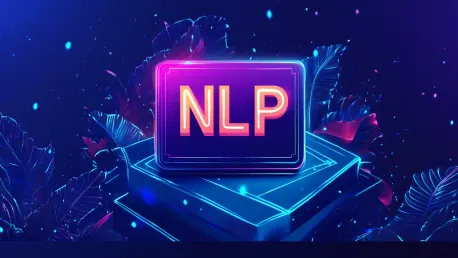DeepSeek-AI has recently unveiled DeepSeek-V3, a groundbreaking Mixture-of-Experts (MoE) language model boasting an impressive 671 billion parameters and activating 37 billion per token. This model signifies a significant leap forward in Natural Language Processing (NLP) by addressing some of the field’s most persistent challenges, including high computational demands, the need for diverse datasets, and the complexity of load balancing in MoE architectures. This article delves into the technical innovations and efficiency improvements that make DeepSeek-V3 a pivotal development in the NLP landscape.
Technical Innovations in DeepSeek-V3
Auxiliary-Loss-Free Load Balancing Strategy
One of DeepSeek-V3’s most notable advancements is its auxiliary-loss-free load balancing strategy, which optimizes the distribution of computational loads. This technique addresses the previously cumbersome process of balancing computational tasks across multiple experts, thus enhancing the model’s efficiency. By eliminating the need for auxiliary loss, DeepSeek-V3 manages to streamline operations, reducing unnecessary computational overhead and ensuring that the system’s resources are utilized more effectively. This innovation not only improves the model’s performance but also reduces the energy consumption typically associated with large-scale language models, making it more eco-friendly.
In addition, the auxiliary-loss-free load balancing strategy has been instrumental in achieving the model’s impressive performance metrics. By carefully distributing tasks, the model can handle a higher volume of linguistic data with greater accuracy and speed. This method has made DeepSeek-V3 stand out among its peers, offering a more sustainable and efficient approach to NLP. The implementation of this strategy showcases the potential for future models to integrate similar techniques, pushing the boundaries of what is possible in terms of both performance and environmental impact.
Multi-Token Prediction Training Objective
DeepSeek-V3 also incorporates a multi-token prediction training objective that significantly enhances data efficiency and expedites the inference process. Unlike traditional language models that often predict one token at a time, this approach allows the model to predict multiple tokens simultaneously, thereby speeding up the overall processing time. This innovation is particularly beneficial for applications requiring real-time language understanding and generation, such as chatbots, translation services, and AI-driven content creation tools. The ability to predict multiple tokens in one go reduces the model’s latency, providing a smoother and more seamless user experience.
Moreover, the multi-token prediction training objective contributes to the model’s superior performance in various benchmarks. By training the model to handle multiple tokens concurrently, DeepSeek-V3 can process complex linguistic patterns more effectively, resulting in higher accuracy when interpreting and generating text. This aspect of the model is indicative of a broader trend in the AI community towards more efficient and responsive language models. As researchers continue to explore and refine these methods, we can expect future advancements that will further optimize processing speeds and accuracy, making AI-powered solutions even more capable and versatile.
Efficiency and Scalability in DeepSeek-V3
FP8 Mixed Precision Training
In the realm of efficiency, one of the standout features of DeepSeek-V3 is its utilization of FP8 mixed precision training. This technique reduces GPU memory usage significantly while maintaining the model’s accuracy. By incorporating FP8 mixed precision, DeepSeek-V3 manages to resolve one of the major bottlenecks in training large-scale language models: exorbitant memory consumption. This method involves using lower-precision computations where feasible, without compromising the quality of the output. The result is a more efficient training process that can accommodate larger models within the same hardware constraints.
The adoption of FP8 mixed precision training is a testament to DeepSeek-AI’s commitment to advancing the field of NLP through innovative technological solutions. By reducing the memory footprint, the model becomes more accessible to a broader range of researchers and developers who may not have access to high-end computational resources. This democratization of cutting-edge technology is crucial for fostering a more inclusive and diverse research community, where new ideas and approaches can flourish without being hindered by technological constraints. As more organizations adopt such techniques, we can anticipate a more collaborative and accelerated pace of innovation in the NLP field.
DualPipe Algorithm
Another critical efficiency enhancement in DeepSeek-V3 is the introduction of the DualPipe algorithm, which reduces communication overhead by synchronizing computation and communication phases. This algorithm allows the model to manage 60 tokens per second, significantly streamlining the inference process. By optimizing the interaction between computational and communication tasks, the DualPipe algorithm ensures that the model operates at peak efficiency, minimizing delays and bottlenecks that typically hamper performance. This synchronization is particularly vital for large-scale language models, where the coordination of numerous processes can often lead to inefficiencies.
The DualPipe algorithm’s impact on performance is evident in the model’s competitive edge over other open-source language models. By addressing communication overhead, DeepSeek-V3 can achieve higher throughput, making it more suitable for real-world applications that demand rapid processing times. This improvement not only enhances the user experience but also positions DeepSeek-V3 as a formidable competitor in the increasingly crowded field of NLP. The successful implementation of the DualPipe algorithm highlights the importance of innovative approaches to problem-solving in AI and sets a benchmark for future advancements in the field.
DeepSeek-V3’s Open-Source Impact
Rigorous Training on Vast Datasets
DeepSeek-V3 was rigorously trained on an extensive dataset comprising 14.8 trillion high-quality tokens, underscoring its robustness and versatility. This vast dataset includes a diverse array of linguistic patterns, contexts, and structures, enabling the model to handle a wide range of language-related tasks with remarkable proficiency. The extensive training process ensures that DeepSeek-V3 can accurately interpret and generate text across different domains, making it a valuable tool for various applications, from academic research to commercial use cases. The model’s high performance on educational, mathematical reasoning, and coding tasks further attests to its comprehensive training regimen.
The decision to utilize such a large and diverse dataset also reflects a broader trend towards more inclusive and representative AI models. By training on a wide variety of texts, DeepSeek-V3 can provide more accurate and nuanced responses, regardless of the context or domain. This approach not only enhances the model’s practical utility but also contributes to a more equitable and inclusive AI landscape. As researchers and developers continue to seek out and incorporate diverse datasets, we can expect future models to become even more adept at handling the complexities of human language, ultimately leading to more sophisticated and reliable AI-powered solutions.
Open-Source Commitment
DeepSeek-V3’s open-source nature is a significant departure from the proprietary models that have dominated the field in recent years. By making the model and its underlying technologies available to the public, DeepSeek-AI promotes a spirit of collaboration and transparency within the research community. This approach enables researchers, developers, and enthusiasts to contribute to the model’s ongoing development, refining its capabilities and expanding its potential applications. The open-source release is a strategic move that leverages collective expertise to advance the field of NLP, ensuring that innovations are shared and built upon for the greater good.
The open-source commitment is not merely a symbolic gesture but a practical strategy to drive innovation. By providing access to DeepSeek-V3’s architecture, training methods, and evaluation results, DeepSeek-AI empowers other researchers to explore new directions, identify potential improvements, and develop complementary technologies. This collaborative model of innovation accelerates progress and ensures that advancements in NLP are achieved through collective effort rather than isolated endeavors. Ultimately, DeepSeek-V3’s open-source release represents a pivotal step towards a more inclusive and dynamic AI research ecosystem, where knowledge and innovation thrive through shared contributions and collective ingenuity.
Conclusion
DeepSeek-AI has recently introduced DeepSeek-V3, an advanced Mixture-of-Experts (MoE) language model that features an astounding 671 billion parameters and activates 37 billion parameters per token. This model marks a significant advancement in the realm of Natural Language Processing (NLP), addressing some of the most persistent challenges in the field. These challenges include the high computational demands associated with processing large datasets, the necessity for diverse datasets to enhance model effectiveness, and the intricacies of load balancing within MoE architectures. The development of DeepSeek-V3 highlights many significant technical innovations and efficiency improvements. This article explores how these innovations contribute to DeepSeek-V3 becoming a monumental development in the NLP sector, potentially paving the way for more efficient, robust, and scalable language models. By tackling these critical areas, DeepSeek-V3 not only pushes the envelope in terms of capabilities but also sets a new benchmark for future advancements in the field.









